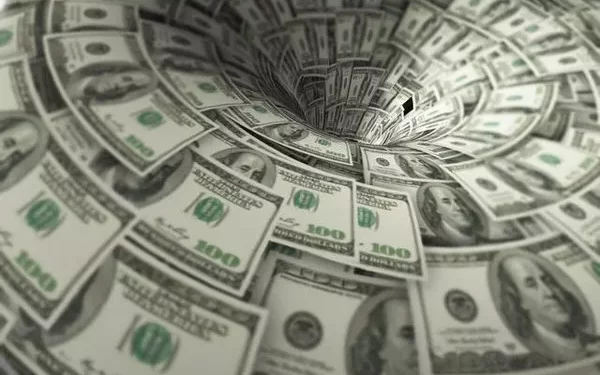Counterfeit money is a persistent problem that affects economies and individuals alike. One of the most counterfeited denominations is the fake 1,000 dollar bill, known for its high face value and allure to counterfeiters. To protect yourself or your business from falling victim to counterfeit currency, it’s crucial to be vigilant and knowledgeable about the security features of genuine bills. In this article, we will walk you through a step-by-step process to help you detect a fake 1,000 dollar bill and ensure the currency you handle is legitimate.
1. Examine the Paper Quality
The first step in detecting a counterfeit 1,000 dollar bill is to examine the paper it’s printed on. Genuine U.S. currency is printed on a special type of cotton and linen paper blend. This paper is distinctive in its texture, durability, and appearance. Counterfeiters often use regular paper or low-quality substitutes, resulting in a noticeable difference in the feel and texture of the bill. Run your fingers over the bill’s surface, paying attention to the tactile quality. Genuine bills have a slightly raised texture due to the embedded red and blue fibers, while counterfeit bills may feel smoother or rougher to the touch.
2. Study the Portrait
The portrait on the front of the 1,000 dollar bill should be a true-to-life representation of the person depicted. Examine the details of the portrait closely, looking for any inconsistencies or anomalies.
Counterfeiters may struggle to reproduce fine details, leading to blurry or distorted features. Compare the bill to a genuine reference, if available, to check for any discrepancies.
3. Verify the Security Thread
One of the most prominent security features on U.S. currency, including the 1,000 dollar bill, is the embedded security thread. Hold the bill up to the light, and you should see a thin, embedded strip running vertically through the bill. The security thread contains text indicating the denomination and is visible from both sides of the bill. Counterfeiters may try to replicate this feature by printing a line on the bill’s surface, but it won‘t have the same look or feel as the genuine security thread.
4. Check the Watermark
Watermarks are another security feature found on genuine U.S. currency. To detect a fake 1,000 dollar bill, hold it up to the light and look for a watermark image of the person depicted on the bill. The watermark should be visible without holding the bill up to the light as well, appearing as a faint image when viewed normally. Counterfeit bills may lack this watermark or have a poorly executed one, making it a telltale sign of a fake.
5. Examine the Color-Shifting Ink
Genuine 1,000 dollar bills feature color-shifting ink on the numeral located in the lower right corner of the bill’s face. Tilt the bill back and forth to observe the color change from green to black or copper.
Counterfeiters may attempt to replicate this effect, but their efforts are often less convincing. If the ink does not shift colors or appears blotchy, you may be dealing with a counterfeit bill.
6. Inspect the Serial Numbers
Each genuine 1,000 dollar bill comes with a unique serial number, consisting of two letters followed by eight numbers. Counterfeiters may struggle to replicate the font and placement of these numbers accurately. Check for consistent spacing, alignment, and font style.
Also, compare the serial number against any available reference to ensure it matches the expected format for genuine currency.
7. Test the Security Thread’s Reaction to UV Light
For an advanced counterfeit detection method, use a UV (ultraviolet) light to examine the bill’s security features. Genuine U.S. currency includes fluorescent ink that reacts under UV light. If you shine a UV light on a real 1,000 dollar bill, the security thread, the denomination numeral, and a small eagle symbol on the front will all fluoresce in bright colors. Counterfeit bills may lack this fluorescence or exhibit uneven or dull colors when exposed to UV light.
8. Be Wary of Ultraviolet Ink Pens
While UV ink pens are sometimes used for quick counterfeit detection, they have limitations. These pens are designed to detect counterfeit bills by checking if the ink fluoresces under UV light. However, counterfeiters have adapted by using UV-reactive ink on fake bills, making them pass the pen test. Therefore, while UV pens can be a useful tool, they should not be relied upon as the sole method for detecting counterfeit money.
9. Consult a Professional
If you have doubts about the authenticity of a 1,000 dollar bill, it’s advisable to seek professional assistance. Contact your local bank, law enforcement agency, or the U.S. Secret Service, which has the expertise and equipment to authenticate currency accurately. It’s better to be safe than sorry when dealing with such high denominations.
In conclusion, detecting a fake 1,000 dollar bill requires a combination of vigilance, knowledge, and the use of appropriate tools. By carefully examining the paper quality, portrait, security features, and serial numbers, as well as using UV light testing when available, you can significantly reduce the risk of accepting counterfeit currency.
Remember that counterfeiters are continually improving their methods, so staying informed about the latest security features and counterfeit-detection techniques is essential for safeguarding your finances and your business.
Related Topics:
1976 2 Dollar Bill Value – History, Value, Errors
How Much Is The 1995 2 Dollar Bill Worth? – Lost Treasure HQ
Unlocking the Value: The Most Valuable 2003 $2 Bill

























